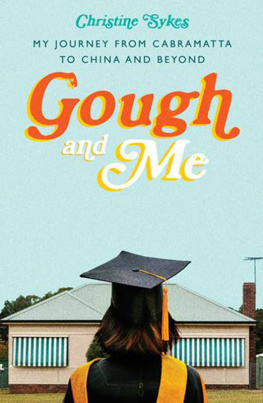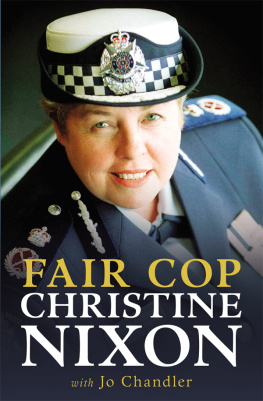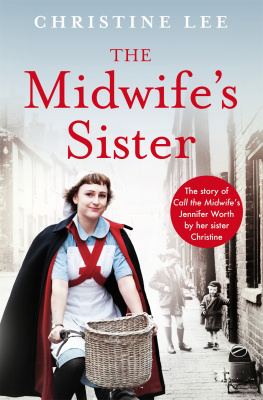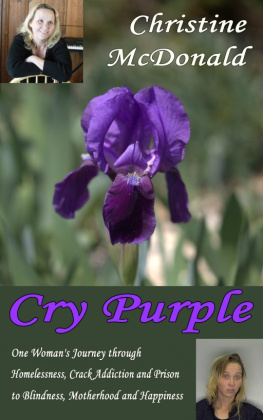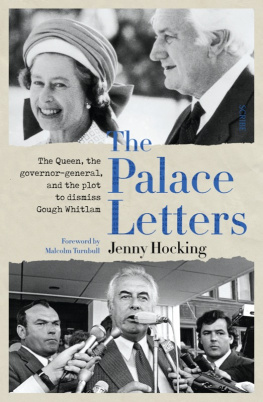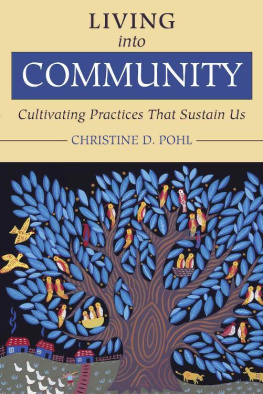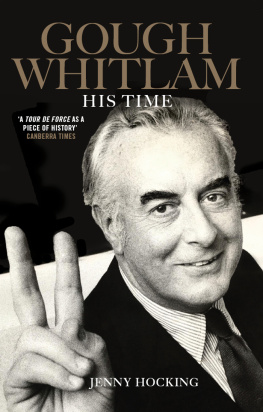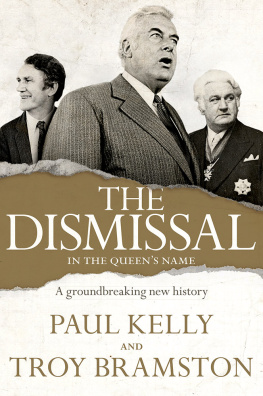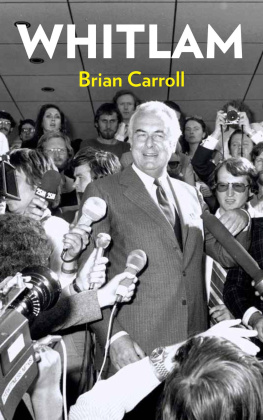Christine Sykes has had an interesting life and career, often inspired by my parents. Gough and Me is an engaging read.
NICHOLAS WHITLAM
A wonderful reminder of Australias history and the people who shaped our future through the day to day lens of a young woman. A brilliant read.
ANN SHERRY AO
An engaging memoir of a working-class girls personal experiences of Gough Whitlam and the legacies of his reforming government.
LYNDALL RYAN AM , FAHA , AUSTRALIAN ACADEMIC AND HISTORIAN
This terrific read is not just for the rusted-on Whitlamites but for all of us who grew up in a very different Australia, one that we often referred to as a cultural desert. Christines life, with all its struggles and great achievements, will resonate with many, particularly women who strive for recognition, respect and equality. Her humour, pathos and sentimentality shine through on every page. A must-read book!
PATRICIA AMPHLETT (LITTLE PATTIE) OAM
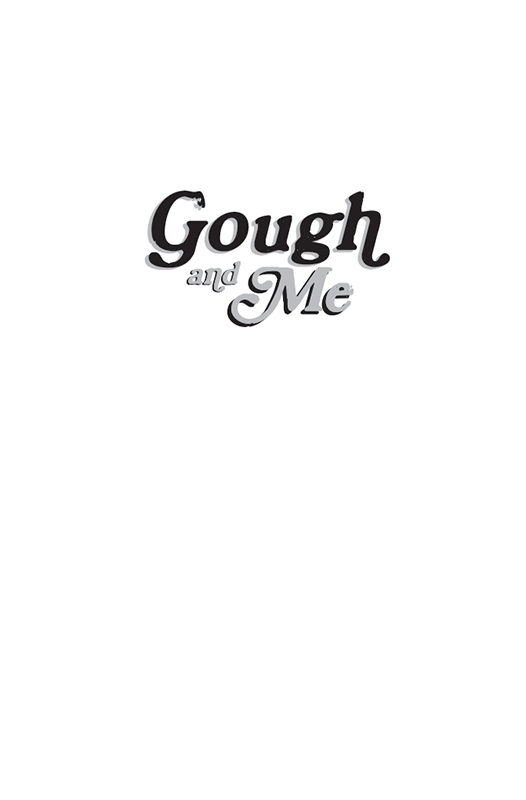
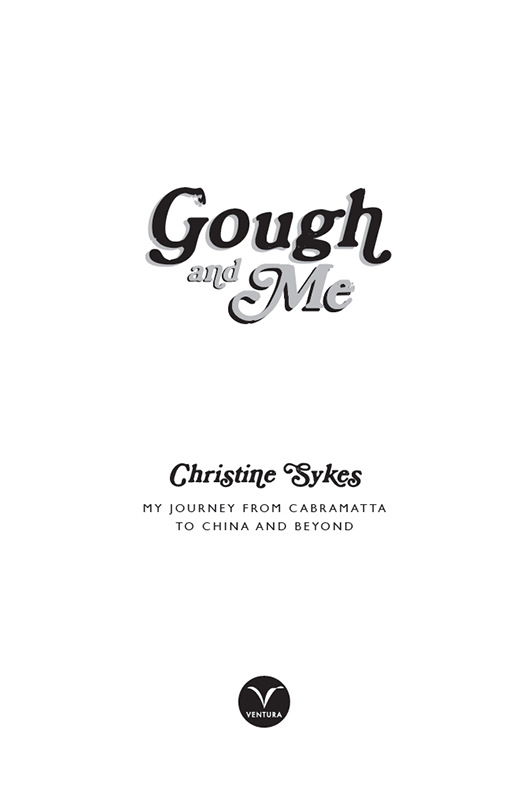
First published in 2021 by Ventura Press
PO Box 780, Edgecliff NSW 2027 Australia
www.venturapress.com.au
10 9 8 7 6 5 4 3 2 1
Copyright Christine Sykes 2021
All rights reserved. No part of this book may be reproduced or transmitted in any form or by any means, electronic or mechanical, including photocopying, recording or by any other information storage retrieval system, without prior permission in writing from the publisher.
Extracts reprinted with permission from Margaret and Gough by Susan Mitchell,
Hachette Australia, 2014.
ISBN: 978-1-920727-53-6 (paperback)
ISBN: 978-1-920727-54-3 (ebook)

Cover and internal design by Deborah Parry Graphics
To my father, who was my working-class hero
Contents
Prologue
W HEN I TURNED EIGHT at the end of 1957, history was being made in my street. Gough Whitlam, the man who would become the most visionary and polarising political leader in Australia, relocated his family from Cronulla to Cabramatta. The Whitlams moved into a four-bedroom, architect-designed brick modernist house in Albert Street, while I lived down the road in a two-bedroom fibro house built by my truck-driver father.
Cabramatta was a burgeoning suburb on the outskirts of south-west Sydney, its growth fuelled by post-war settlement and migration. The world, in the form of people from many countries Italy, Greece, Ukraine, Russia and the former Yugoslav Republic had also arrived on my doorstep.
Together, Whitlam and cultural diversity set me on a course that would take me all the way to China and beyond. I was fortunate to be born to working-class parents and in that place and at that time of unprecedented opportunities and possibilities. However, gaining privilege came at a cost.
My story is multilayered. It is one of social mobility as I crossed educational, vocational and geographical borders. My life grew larger and richer. I returned to my roots in the suburban home of my childhood, only to venture forth again. My story is one of inner and outer struggle, of trying to reconcile my past with my present.
1
May you live in interesting times
O N 1 O CTOBER 1949, Chairman Mao stood at the Gate of Heavenly Peace in Beijing and announced the birth of the Peoples Republic of China. The rise of communism created divisions between Australians and affected our political landscape for more than two decades.
On 10 December 1949, the Ben Chifley federal Australian Labor Party ( ALP ) government lost an election to the conservative LiberalCountry Coalition. Australias new prime minister, Robert Menzies, pledged to outlaw communism.
In between these historic events, on 1 November 1949, I was born to parents who lived in a garage in Cabramatta. Dad was a truck driver and Mum was a process worker. Neither had attended high school.
In what was typical Australian style, my parents said I was special because I was born on Melbourne Cup Day, the first Tuesday of November. The Melbourne Cup is Australias most famous annual horse race and has been running for over 150 years.
The race that stops the nation couldnt stop me. After my mother gave birth, the nurses snuck off to listen to the race, leaving her in the corridor. From cup sweeps to individual bets, all the hospital staff had money riding on the outcome and the frenzied commentary made it incredibly exciting. That year the Sydney horse Foxzami won the race brilliantly in what the radio commentator described as a beautiful run all the way.
At this time, Gough Whitlam was a radio celebrity, which was a big deal in those pre-television days, having won the National Quiz Championship two years in a row.
Dad reckoned it was because of the radio quiz that Gough moved to Cabramatta and, more than 20 years later, became prime minister. Ben Chifley had initiated the national quiz and avidly listened to it. He suggested to Goughs father, Crown Solicitor Fred Whitlam, that Gough should enter federal politics. Gough was delighted at the suggestion as he viewed the parliament as the central institution for democratic processes and believed in its potential to alleviate disadvantage.
As well as being a radio celebrity, Gough was a practising solicitor, living in Wangi Avenue, Cronulla with his social-worker wife Margaret, and two sons, Anthony and Nicholas, in an architect-designed home, which a war service loan had helped them finance. The Whitlams third son, Stephen, was born in April 1950 and Catherine was born almost four years later in February 1954.
Gough Whitlam took a keen interest in politics. He was a staunch member of the Labor Party. However, many in the Labor Party were wary of Gough, seeing him as a silvertail.
On his third attempt at entering politics, after unsuccessful forays into local council and state politics, on 29 November 1952, Gough succeeded. He won the federal seat of Werriwa, the most populous electorate in New South Wales, encompassing Cronulla in the east, Stanwell Park in the south and past Cabramatta in the west.
Our house in Albert Street Cabramatta was on a quarter-acre block. Like Gough, Dad had bought the land with a war service loan. He and my uncles built a garage, which we lived in while they built our fibro house with galvanised iron roof. We were part of a trend: by 1952, more than half the new houses in New South Wales were built by their owners.
Our move from the garage into our white house with forest green trims when I was two years old was a huge step up in our comfort. From family discussions, I imagine what it must have been like to enter the completed house for the first time.
Im a toddler, climbing the front brick steps one foot at a time behind Mum and holding the wall for balance. When I turn to enter the veranda, I notice the bay window, which made our house look faux Federation.
Mum opens the front door and I follow her into our hall. It seems massive. I turn to the left and enter the lounge room with brick fireplace, and French doors that open onto the front veranda. Along the wall, in pride of place, is Dads bookcase with stepped shelves and lacquered finish. Most of the books are hardback. Neatly positioned on the top shelf is poetry by Banjo Patterson and Henry Lawson. Dad often read me bush poetry like the Ballad of the Drover and stories like The Loaded Dog, about the cattle dog that blew up.
Next page
